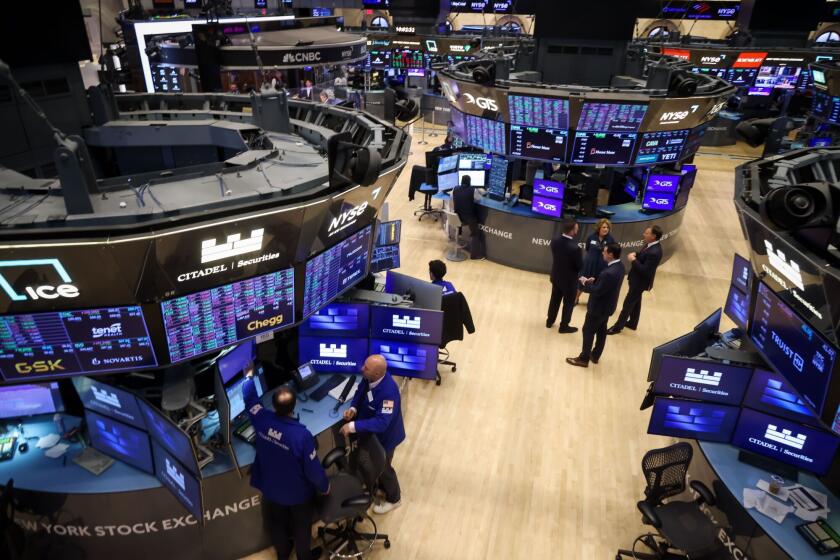TSA officers to try interview technique
- Share via
If you are flying out of Boston Logan International Airport, be prepared to have a brief conversation with a Transportation Security Administration officer who will be interested in more than what you have to say.
Under a 60-day pilot program that starts next week, TSA officials will approach passengers with a few questions to gauge their reaction and look for signs that the travelers may be hiding something. The program is another layer in the country’s airport security program that includes full-body scans and pat-down searches.
Depending on the outcome of the Screening of Passengers by Observation Techniques program, TSA officials said, the practice could be expanded to airports across the country.
In other airports, specially trained TSA officers (known as behavior detection officers) already patrol the terminals looking for passengers who are acting suspiciously and order them to undergo extra screening. In 2008, such officers spotted a passenger at Orlando International Airport carrying a bag that officials said contained components for a bomb.
Under the Boston test program, agents trained in interviewing techniques will be posted near the line where TSA officers check passengers’ identification. The officers will ask travelers a few questions and order extra screening for those who show signs they could be a threat.
What kind of signs? “Involuntary physical and physiological reactions that people exhibit in response to a fear of being discovered,” said TSA spokesman Nico Melendez, without elaborating.
If passengers decline to answer, he said, TSA agents will order them to undergo thorough screening.
• Free airfare? Don’t hold your breath
Ten years ago, Michael O’Leary, chief executive of low-cost Irish airline Ryanair, predicted he would eventually collect enough revenue from fees for in-flight food, entertainment and seat upgrades that he could eliminate airfares altogether for some flights.
Although revenue from such fees continues to rise, an airline consulting firm predicted last week that they would generate no more than 30% of the total operating revenue for most airlines — not enough to do away with airfares.
The world’s 47 largest airlines reported collecting $21.46 billion in such fees last year, according to a report from Wisconsin-based IdeaWorks Co., a firm that advises airlines on ways to increase such revenue. By comparison, 23 airlines reported collecting $2.45 billion in 2007.
Ryanair collected more than $1 billion last year in extra fees, representing 22% of its total revenue for 2010, according to the report.
Revenue from extra fees “certainly helps the bottom line and definitely reduces the pain of high fuel prices,” the report said. But the “ability to eliminate airfares remains elusive for Ryanair and the airline industry.”
• About that airline tax holiday ...
A congressional feud that cut funding for the Federal Aviation Administration for two weeks created clear winners and losers.
Because Congress could not agree on a funding bill for the agency, the FAA on July 25 halted more than 250 airport construction projects, valued at more than $10.5 billion, and put nearly 4,000 government employees on temporary furlough.
The losers were the furloughed workers and the passengers hoping to benefit from the improvement projects.
Without a funding bill, the FAA could no longer collect taxes from the nation’s airlines to pay for the improvement projects.
But only a few carriers — including Alaska, Virgin America and Frontier — passed the savings from a temporary tax holiday along to passengers. Most airlines increased prices to keep fares at pre-tax levels and pocketed the difference.
Among the winners in the feud were those passengers on the airlines that didn’t raise rates. But the biggest winners were the airlines that raised fares and collected a total of $28.5 million extra for each day the FAA did not collect taxes, JPMorgan analyst Jamie Baker said in a report to clients last week.
A temporary funding bill was approved last week, but the feud between warring lawmakers is likely to start back up when Congress returns to work in September.
Meanwhile, Baker predicted that once the FAA begins to collect airline taxes, all carriers will roll back their fares to the previous levels.
“Granted, simply leaving fares unchanged would translate into a healthy 10% fare increase, but rarely has the industry raised fares by this magnitude in a single effort,” Baker said.
More to Read
Inside the business of entertainment
The Wide Shot brings you news, analysis and insights on everything from streaming wars to production — and what it all means for the future.
You may occasionally receive promotional content from the Los Angeles Times.










